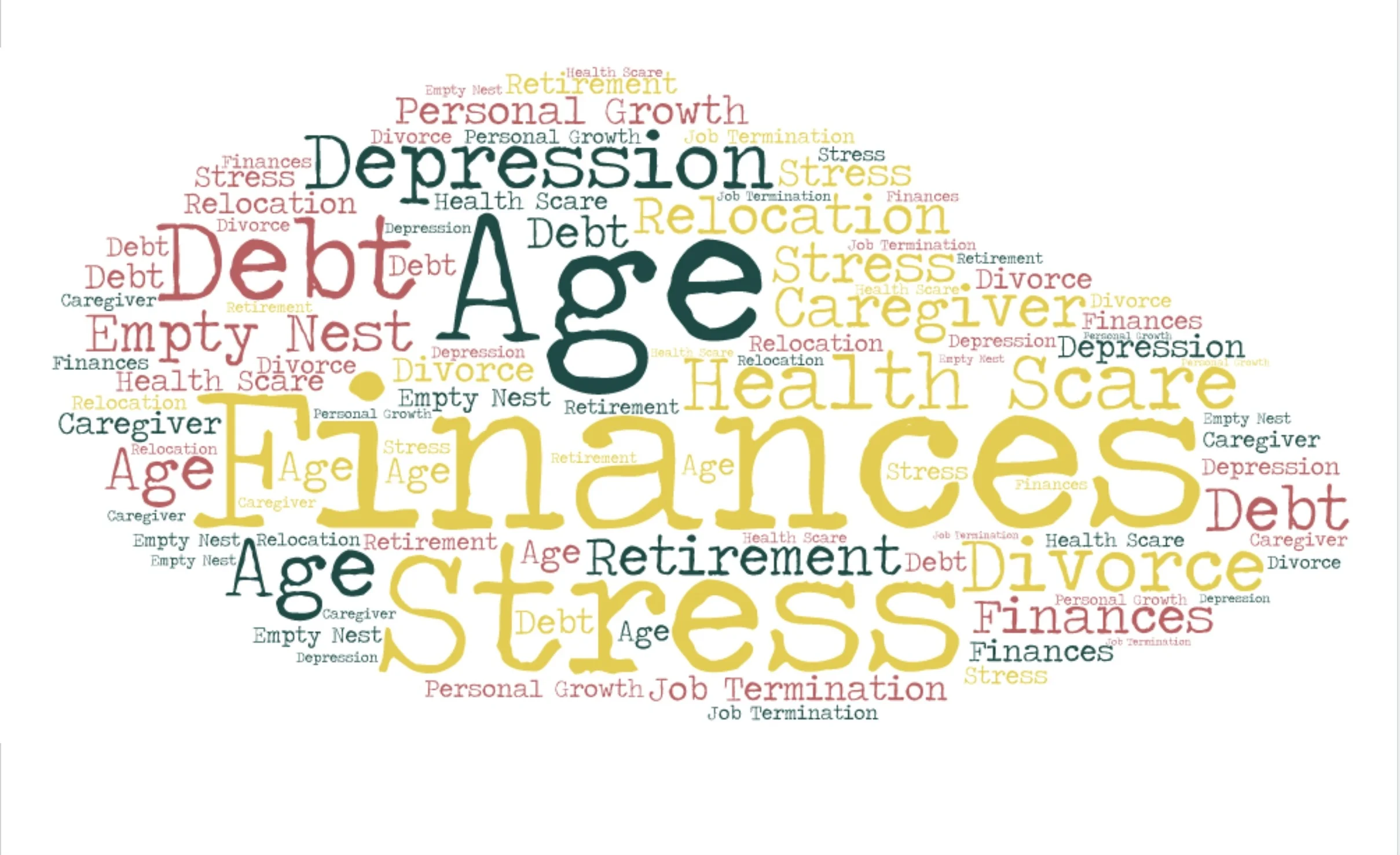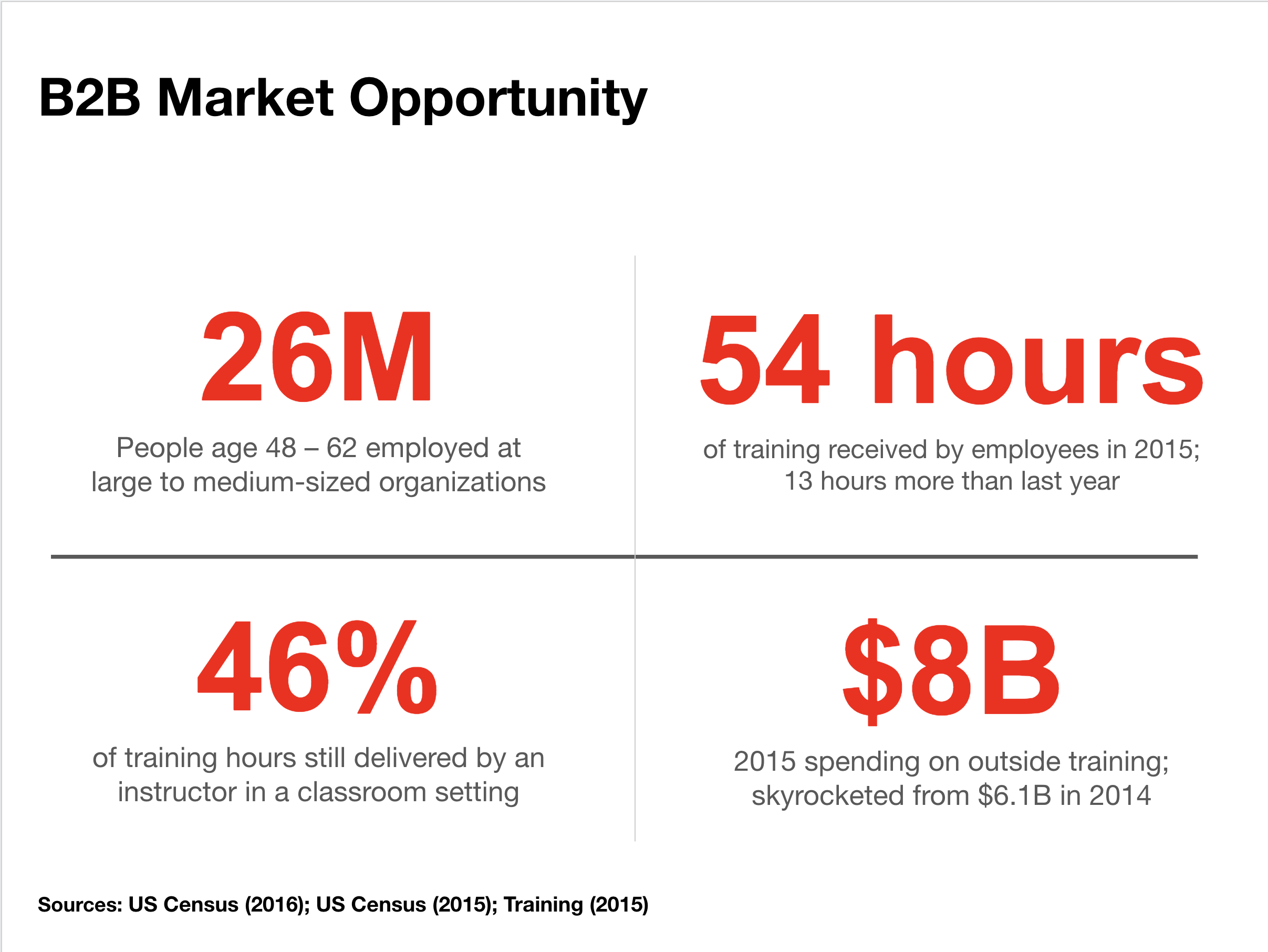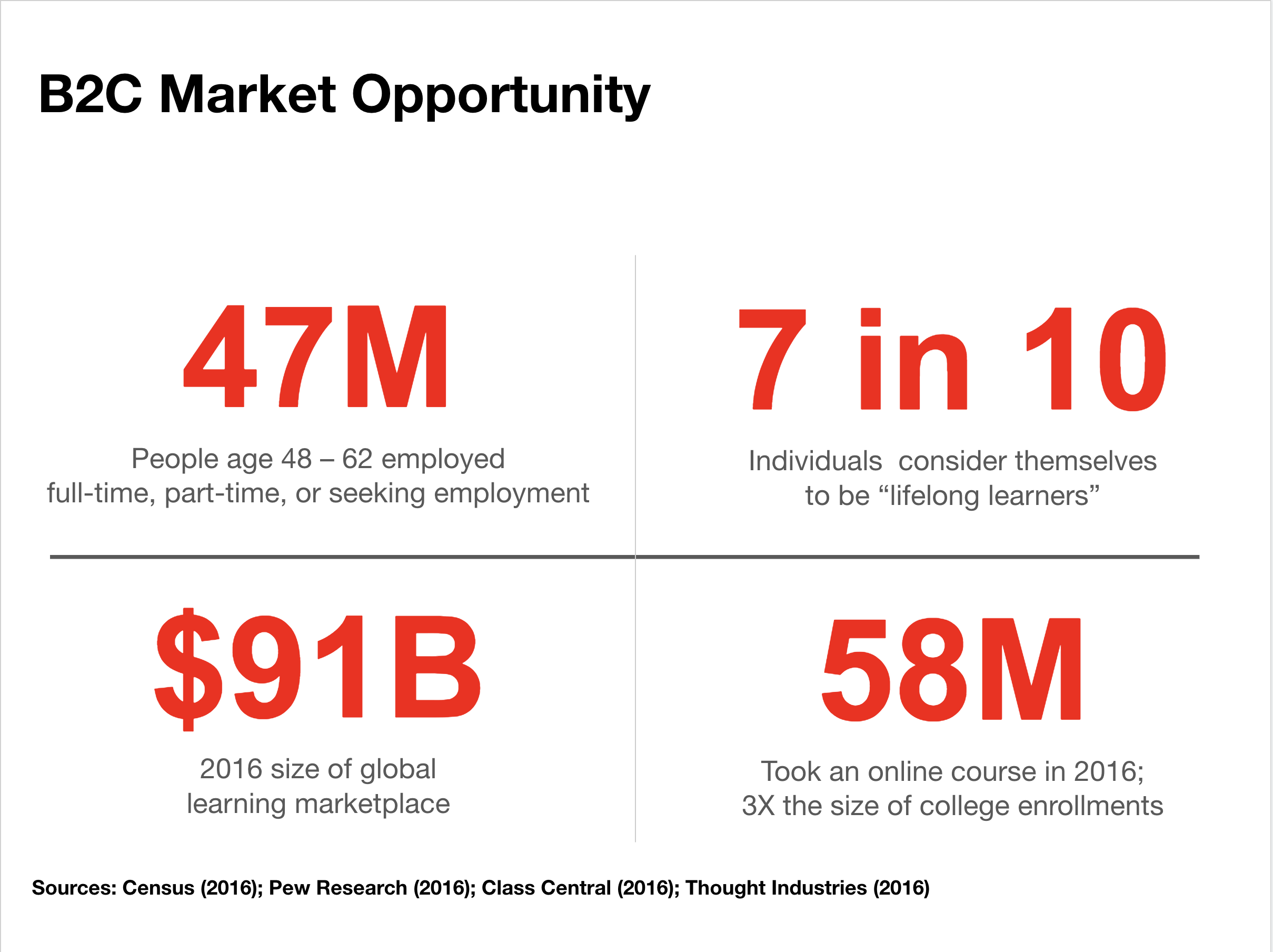VALIENCE: Life re-imagined
the challenge:
How might we apply a new model of aging and the advantages of the web to support individuals age 48 - 62 during different major life transitions?
MY ROLE:
UX-Research Fellow
Company Sponsor:
AARP
Abstract
This UX-research project contributed to a web-based product for older adults. It aimed to re-think the aging model relative to workforce training and education, as well as supplemental professional training opportunities. The product proposal was a digital training and up-skilling platform.
Extended project description
This UX-research project contributed to a web-based product for older adults. It aimed to re-think the aging model relative to workforce training and education, as well as supplemental professional training opportunities. We were tasked with building on the extensive aging research of AARP and other institutes, specify a target market within their active user-base, undergo market research, and conduct user testing. The product proposal was a digital training and up-skilling platform.
Meet The Team
The team of fellows were sponsored by AARP. We often sought input from company leaders and members of the design, innovation, and business strategy teams.
understanding the market
Forced retirement vs. desired retirement within this sample of workers age 50+.
methodologies
META-ANALYSIS OF SECONDARY-DATA
Secondary data was collected and analyzed using a meta-analysis technique, which captured the significance of the common identified problems. Variables with the strongest effect-size were selected to continue to the design-ideate phase of this iterative process.
IDEATION PHASE, INTERNAL FOCUS GROUPS:
I conducted a series of design thinking focus groups amongst Fellows and representatives from marketing/sales, consumer outreach, and more senior business strategists to determine the most valuable of product ideas generated in previous design meetings with Fellows. Focus group participants rated different ideas from 1-5 for each of 3 dimensions: 1) likeliness to ‘delight’ target market; 2) how ‘rational’ the idea is to execute; and 3) the potential to deliver the ‘wow-factor’.
Series 1: This set of focus groups involved gathering information about 1) which product ideas were most valuable to individual units/departments, and 2) what motivational factors were used to ascribe value to different products. During these focus groups, I used the techniques of free-association/group-discussion, voting, and interactive surveying to collect data.
Series 2: This set of focus groups explored which products emerged as most valuable when the group composition was mixed across units/departments, and when motivations for choosing a product were shared across units/departments. During these focus groups, I used the techniques of free-association/group-discussion, voting, and interactive surveying to collect data.
FINDINGS FOR THIS PHASE OF THE DESIGN PROCESS:
1) Individuals in specific units/departments tended to ascribe value to product ideas based on the product’s implications for their specific roles, backlogs, and the units’ perceived capacity to be successful.
2) After hearing the motivations of other units/departments and considering the end-to-end variables of the full design-to-release process, participants, on average, tended to modify the relative position of each idea (position of an idea was based on cumulative score across all three value-dimensions) about 73% of the time.
PROTOTYPE TESTING:
Scores from the Series 2 Focus Groups were used to help determine which ideas would move forward into iterative prototyping/testing.
After careful consideration, and with the support of Business Strategy team members, I decided to assign weighted consideration to the three value-dimensions based on the particularities of the challenge. After factoring in the weighted values, 3 product ideas were selected.
I conducted another round of voting with the Fellows, with input from Business Strategy, to determine which of the selected ideas would enter testing first. I based this on perceived testability of each prototype.
Perceived testability was measured on a scale from 1-5 for each of the following dimensions:
Interpretability: the ability for the consumer to interact with the product with little-to-no explanation of the product’s functionality.
Measurability: the ability to generate measurable insights during field-testing.
Distinctiveness: The ability for the product to stand-out from other products for the purposes of A/B testing.
I lead several iterative test/re-test phases until the VALIENCE prototype was selected, and proposed to Executive Leadership—including AARP’s CEO and CFO.












